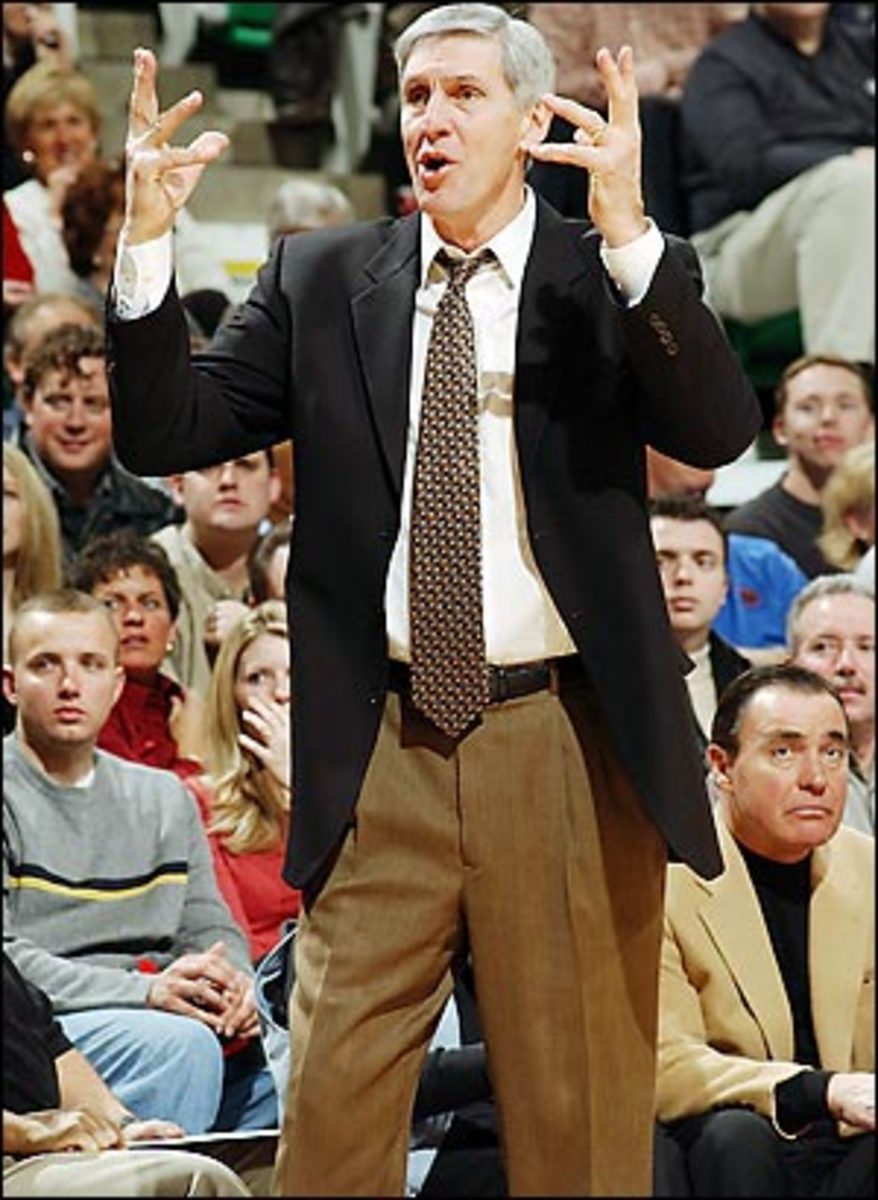Foul play (Cont'd.)


CLICK HERE TO RETURN TO PART I
Moreover, playing a style that the rules will no longer allow places stresses on other parts of their defense. Utah used to force more turnovers than the league average, as all those reaches at the ball and collisions in the paint often jarred the ball loose. But those all are getting a whistle these days; as a result, Utah forces turnovers on 14.6 percent of opponent possessions -- they averaged 16.7 a year ago. Basically, their opponents are getting two extra possessions a game, which on average is worth about two extra points, all because of the revised officiating.
What's a coach to do? Sloan has been running his system this way for two decades in Salt Lake City, so it's going to be tough to overhaul his style. On the other hand, the alternative is worse. Utah can't possibly compete if they're going to give opponents a parade to the free-throw line every night, so they have to try something different. It might be too late to salvage this season, but should Sloan return for a 18th campaign in Utah -- and all indications are that he will -- he'll have to have some new tricks up his sleeve to combat the altered reality of NBA defense.
I received a torrent of e-mails on last week's All-Star column, most of which can be summed into two general categories:
1) What about Player X on my favorite team? Shouldn't he make it? There were many "Player X" nominees, with Tony Parker, Chris Bosh, Kirk Hinrich, Richard Hamilton, and Emeka Okafor being the most popular. My blanket assessment on all them is, yes, they're good, but no, they aren't quite that good. In another year all five of them could be in the All-Star Game, but this year none have done enough to merit inclusion.
2) How can Paul Pierce make it ahead of Antawn Jamison? OK, now we're getting somewhere. I had a torrent of e-mails about this specific selection -- as many as I got for the rest combined. Because Pierce has been pouting in Boston and Jamison has been one of the keys to a recharged Washington team, fans are developing a perception that Jamison is more deserving.
Closer examination of their contributions quickly quells that notion. Since neither will be voted in based on his defense, it's pretty easy to break it down statistically with these two:
• Pierce averages 21.6 points per game while Jamison averages 20.2, even though Pierce plays three minutes a game fewer.
• Pierce shoots 43.2 percent, while Jamison shoots 42.9.
• Pierce has the unique double whammy of making more 3-pointers but still getting to the line nearly twice as often.
• Pierce averages twice as many assists and steals.
• Finally, Pierce is his team's primary option, while Jamison is the third choice after Larry Hughes and Gilbert Arenas.
While it's true that Pierce's body language hasn't been exemplary, that shouldn't overshadow his very real contributions on the court. Those contributions are the only thing keeping Boston near .500 right now. While Jamison's importance to the Wizards' resurgence is unquestioned, he hasn't been Pierce's class this season.
